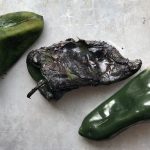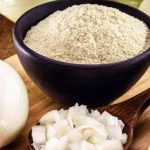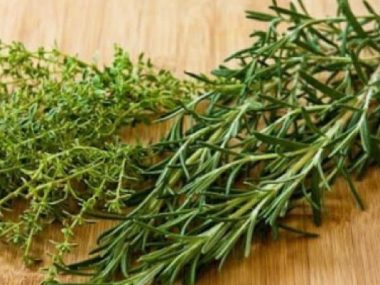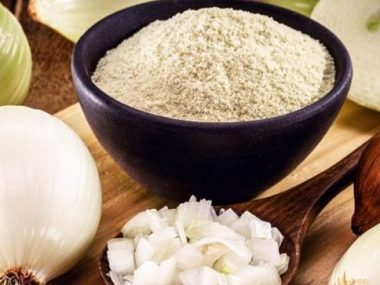Fresh Cilantro vs Dried
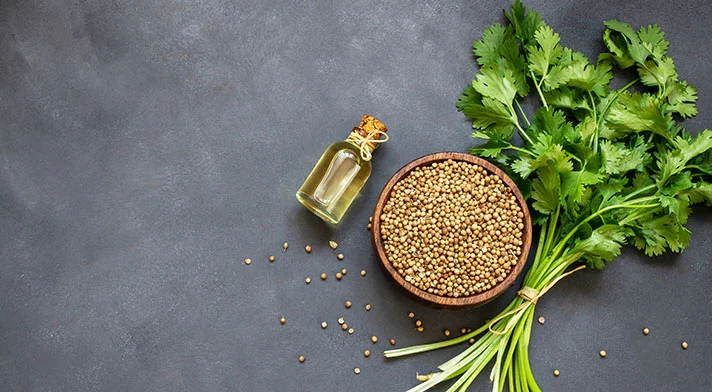
Herbs are an intricate part of recipes all over the world and this is due to the incredible role herbs have played in our recipes and even influenced our eating habits. One of such herbs is cilantro. Cilantro is consumed either fresh or dried, but many do not know which form is best for cilantro, cooking with fresh cilantro or cooking with dried cilantro. That is what necessitated this dried cilantro vs fresh cilantro comparison article. Something you should note at the back of your mind is, even though they might be the same plant, the moisture content of all herb and vegetables usually influences their taste, scent, aroma and even flavor. Without any further ado, let’s dive in.
Cooking With Fresh Cilantro Vs Dried Cilantro
In the following sections you would learn the intricacies of the fresh cilantro vs dried cilantro comparison, particularly from understanding the difference associated with cooking with either of the two different types of the cilantro herb.
Cooking With Fresh Cilantro
Cooking with fresh cilantro can truly elevate your culinary creations, whether you’re preparing Mexican, Thai, Indian, or any other cuisine that celebrates its distinctive flavor. Here are some tips and ideas to make the most of fresh cilantro in your cooking:
- Choosing and storing: When selecting fresh cilantro, look for vibrant green leaves with no signs of wilting or yellowing. The stems should be firm and not slimy. To keep cilantro fresh, trim the ends of the stems, place it in a jar or glass of water, and loosely cover it with a plastic bag. Store it in the refrigerator, changing the water every few days. Alternatively, you can wrap it loosely in a damp paper towel and place it in a plastic bag before refrigerating.
- Herbaceous garnish: Fresh cilantro makes an excellent garnish for a wide range of dishes. Chop the leaves finely and sprinkle them over tacos, soups, curries, stir-fries, or salads just before serving. The bright green color and fresh aroma will add a burst of freshness and visual appeal.
- Flavoring salsas and sauces: Cilantro is a key ingredient in many salsas and sauces. Whether you’re making a classic tomato salsa, tangy chutney, or zesty guacamole, finely chop fresh cilantro and mix it in. The herb’s citrusy and herbaceous notes will complement the flavors of the other ingredients and provide a refreshing kick.
- Creating vibrant marinades: Fresh cilantro can lend its unique flavor to marinades for meats, seafood, or vegetables. Blend together fresh cilantro leaves, garlic, lime juice, spices, and a touch of oil to create a vibrant and aromatic marinade. Allow the ingredients to meld together for a while before using it to marinate your chosen protein or vegetables. The cilantro-infused marinade will infuse the dish with its distinct flavors.
- Adding freshness to salads: Tossing fresh cilantro into salads can bring a refreshing element to the mix. Tear or chop the leaves into smaller pieces and add them to green salads, grain salads, or even fruit salads for an unexpected twist. The herb’s bright flavor and fragrance will awaken your taste buds.
- Blending into dressings and dips: Fresh cilantro can add a delightful zing to dressings and dips. Blend it with lime juice, olive oil, garlic, and spices to create a vibrant cilantro dressing for salads or drizzling over grilled vegetables. You can also blend it with yogurt or sour cream to create a flavorful cilantro dip or sauce for your favorite snacks.
- Infusing rice and grains: Fresh cilantro can infuse its aromatic essence into rice and grains, enhancing their flavor. Add a handful of chopped cilantro to the cooking liquid when making rice, quinoa, or couscous. As the grains cook, the cilantro will release its fragrance, transforming a simple side dish into something truly special.
- Experimenting with cilantro-based sauces: Cilantro-based sauces like chimichurri or cilantro pesto can be a game-changer in your culinary repertoire. These sauces typically combine fresh cilantro with garlic, lime juice, olive oil, and sometimes other ingredients like jalapeños or nuts. They can be used as a marinade, a topping for grilled meats or seafood, or as a flavorful condiment to brighten up various dishes.
You should know that fresh cilantro is at its best when used shortly after purchasing. Its flavor and aroma are most potent when the herb is fresh, so try to incorporate it into your dishes as close to the time of purchase as possible.
Cooking With Dried Cilantro
Cooking with dried cilantro can be a convenient and flavorful way to add a burst of herbaceous goodness to your dishes. Unlike fresh cilantro that is undeniably vibrant and fragrant, dried cilantro offers a longer shelf life and can be easily stored in your pantry, making it a fantastic pantry staple.
Here are some tips and ideas for cooking with dried cilantro:
- Understanding the flavor: Dried cilantro retains much of the herb’s characteristic taste, although it may be slightly more muted compared to its fresh counterpart. It has a citrusy, slightly tangy flavor with hints of sweetness and earthiness. Keep in mind that the potency of dried cilantro can vary, so it’s a good idea to taste and adjust the amount accordingly.
- Enhancing soups and stews: Dried cilantro works exceptionally well in soups and stews, infusing them with its distinct flavor. Add a teaspoon or two of dried cilantro to your favorite vegetable or chicken soup, chili, or curry. The heat from the cooking process helps rehydrate the cilantro, allowing its flavor to permeate the dish.
- Seasoning meat and seafood: Dried cilantro can be a fantastic seasoning for meats and seafood. Create a dry rub by combining dried cilantro with complementary spices like cumin, paprika, garlic powder, and black pepper. Rub this mixture onto chicken, pork, or fish before grilling, roasting, or pan-searing. The combination of flavors will elevate your dish to new heights.
- Brightening up salsas and dips: Whether you’re making a classic tomato salsa, guacamole, or a creamy dip, dried cilantro can add a refreshing and herbaceous touch. Stir in a teaspoon of dried cilantro into your salsa or dip, and allow it to sit for a while to rehydrate and infuse the flavors. Taste and adjust as needed before serving.
- Flavoring rice and grains: Give your rice or grain dishes an exciting twist by incorporating dried cilantro. Add a teaspoon of dried cilantro to the cooking liquid while preparing rice, quinoa, or couscous. The heat and moisture will revive the herb, allowing it to infuse its essence into the grains. This simple addition can transform an ordinary side dish into a flavorful accompaniment.
- Dressings and marinades: Dried cilantro can also contribute to the depth of flavor in dressings and marinades. Whisk together olive oil, lime juice, dried cilantro, garlic, and a touch of honey to create a zesty vinaigrette for your salads. For marinades, combine dried cilantro with other spices, such as chili powder, cumin, and paprika, to create a tantalizing blend for marinating chicken, beef, or tofu.
When cooking with dried cilantro, it’s essential to let it rehydrate to bring out its full flavor potential. Whether you’re simmering it in a liquid or incorporating it into a dry mixture, giving it some time to absorb moisture will make a significant difference. As I always recommend, keep in mind that dried herbs are more concentrated than fresh herbs, so start with smaller amounts and adjust to your taste preference.
From the above sections, you should already know what type of cilantro your recipe need and the dry cilantro vs fresh debate wouldn’t be of much use, but if you still want to get a proper understanding of the true difference fresh cilantro would have versus dried cilantro, on your recipe, then the following table should help clarify things a bit.
Meanwhile, check out substitutes for Guajillo chili for the best spiciness.
Dried Cilantro vs Fresh Cilantro Table
| Cooking Features | Fresh Cilantro | Dried Cilantro |
|---|---|---|
| Flavor | Vibrant, citrusy, herbal | Muted, retains some herbal notes |
| Aroma | Strong and distinct | Less pronounced |
| Culinary Uses | Garnish, salsas, sauces, dressings | Soups, stews, slow-cooked dishes |
| Usage in Recipes | Added towards the end or raw | Added throughout cooking process |
| Substitution | Use larger quantity for similar flavor | Use about 1 tbsp per 1/4 cup of fresh |
| Shelf Life | Short (best used within a few days) | Long (several months when stored properly) |
Whichever cilantro you decide to use in your recipe, you would not miss out on the excellent flavor and aroma it has to offer in your dish.
